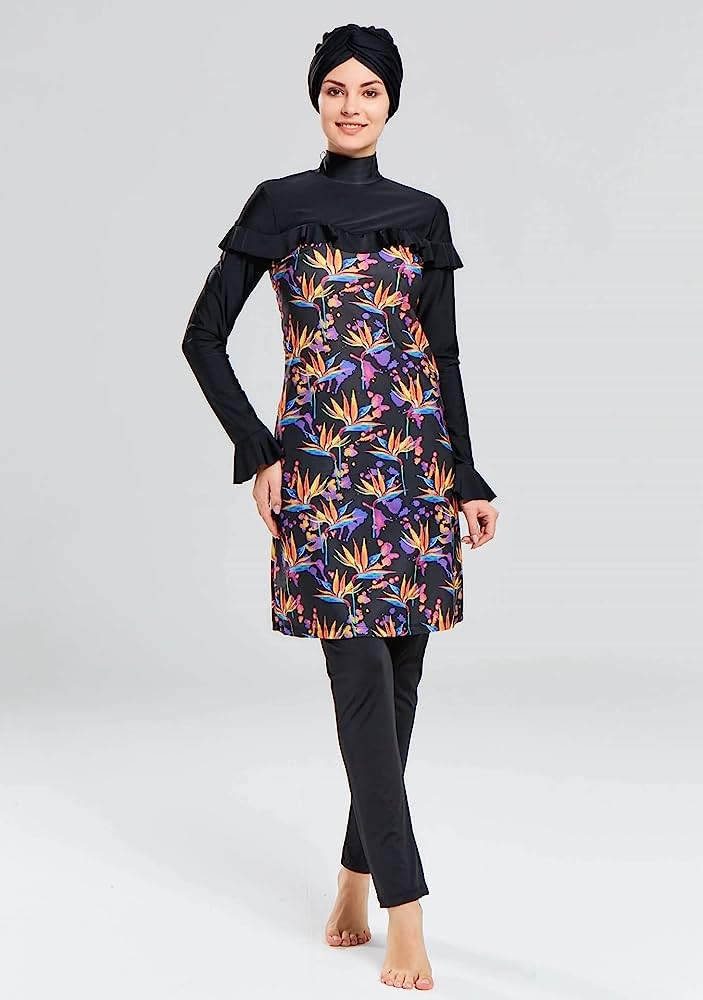
In recent years, the burkini has become a controversial topic in the tourism industry, especially in countries where the majority of the population are not Muslim. The burkini is a type of swimsuit that covers the whole body except for the face, hands, and feet. It was first designed in 2004 by the Australian-Lebanese designer Aheda Zanetti and gained popularity among Muslim women who wanted to swim but did not want to reveal their bodies in public. In 2016, the burkini made headlines when several French mayors banned it on public beaches, causing an international outcry. The burkini debate raises questions about the intersection of religion, culture, and tourism. In this article, we will examine the burkini and tourism, its impact on Muslim travelers, and ways to attract this growing market.
The burkini and its controversy
The burkini is more than just a piece of clothing; it is a symbol of Muslim women’s struggle for acceptance and equality in Western societies. Muslim women who wear the burkini often face discrimination, harassment, and even violence. The burkini has also become a contentious issue in the political arena, with some politicians using it as a tool to stoke anti-Muslim sentiment.
The French burkini ban of 2016 sparked a global debate on religious freedom, cultural tolerance, and gender equality. The mayors of several French towns, including Cannes, Nice, and Corsica, banned the burkini on public beaches, citing concerns about public order, hygiene, and secularism. The ban was widely criticized by human rights organizations, Muslim groups, and some politicians, who saw it as a violation of religious freedom and an attack on Muslim women’s rights.
The controversy over the burkini also highlighted the challenges of balancing cultural values and tourism. France, as a major tourist destination, depends on the influx of foreign visitors to boost its economy. However, the burkini ban could deter Muslim tourists from visiting the country, leading to a loss of revenue and reputation.
The impact of the burkini on Muslim travelers
The burkini controversy has significant implications for Muslim travelers, who are often marginalized and overlooked in the tourism industry. Muslim travelers are a growing market, with an estimated 130 million Muslim travelers worldwide in 2019, according to Mastercard-CrescentRating Global Muslim Travel Index (GMTI). The GMTI also revealed that Muslim travelers spent $194 billion on travel in 2018, making them a lucrative market for the travel industry.
However, Muslim travelers face several challenges when it comes to traveling, including discrimination, lack of halal food options, and limited prayer facilities. This can lead to a negative perception of the destination, affecting future travel decisions and recommendations to others. In contrast, destinations that are welcoming and accommodating to Muslim travelers can benefit from positive word-of-mouth and increased tourism revenue.
Attracting Muslim travelers
To attract Muslim travelers, destinations need to understand and address their unique needs and preferences. This includes providing halal food options, prayer facilities, and accommodating cultural practices such as modest dress codes. The burkini ban should be lifted, and Muslim women should be allowed to wear the burkini on public beaches without fear of discrimination or harassment.
In addition to catering to Muslim travelers’ needs, destinations can also promote their cultural and religious heritage. Destinations can also offer halal-certified tours and activities, such as cooking classes, cultural performances, and outdoor adventures.
Another way to attract Muslim travelers is through marketing and promotion. Destinations can leverage social media, influencers, and travel agencies that specialize in Muslim travel to reach this market. They can also participate in Muslim travel exhibitions and events to showcase their offerings and engage with potential visitors.
Conclusion
The burkini and tourism debate highlights the challenges and opportunities of catering to diverse cultural and religious practices in the tourism industry. The burkini ban has a significant impact on Muslim travelers, who are a growing market and a source of revenue for the travel industry. To attract Muslim travelers, destinations need to provide halal food options, prayer facilities, and accommodating cultural practices, as well as lifting the burkini ban and promoting their cultural and religious heritage.

